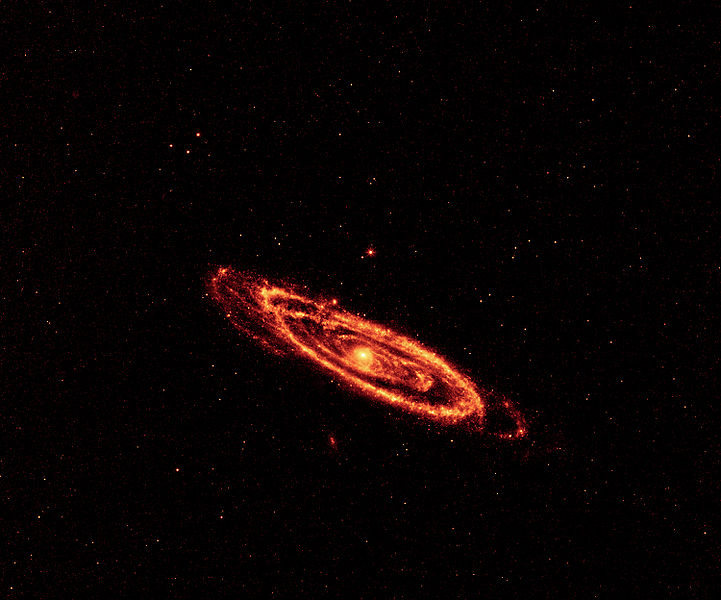WISE
Contents
The Wide-Field Infrared Survey Explorer
The Telescope
WISE was launched in 2009 and circles the Earth in a polar orbit at an altitude of 525 kms. It's orbital path means that it is always on the day/night line as it goes around the Earth. In order to cancel the 'noise' from its own electronics, the infrared detectors were kept cool in a tank of solid Hydrogen at a temperature of 17 K. The telescope is now passively cooling as the cryostat has run out of fuel. The aperture of the telescope is only 40 cms which, while small, is ideal for scanning the entire sky with a wide field-of-view (47 arc minutes). The main objective is made of aluminum coated with gold in order to be more reflective than conventional optics made of glass coated with aluminum. WISE images the sky at four different wavelengths: 3.4, 4.6, 12, and 22 microns. The resolution at the three shortest wavelengths is 6 arc seconds, or 1/600 degree. The resolution of the longest wavelength is 12 arc seconds, or 1/300 degree. Each detector array contains ~1 million pixels. This makes WISE hundreds of times more sensitive than previous infrared space telescopes, such as IRAS with a total of only 62 pixels.
The Science
WISE records images every 11 seconds while orbiting Earth. It has completed 2 scans of the entire sky and is in the process of completing a third. It works in conjunction with the Spitzer Space Telescope[1] and the Herschel Space Observatory[2]. Both of these telescopes scan individual objects in infrared rather than the whole sky. WISE scans the sky for 'cool' objects. These include brown dwarfs, debris discs around young stars, asteroids, comets, and ULIRGs (Ultra Luminous Infrared Galaxies).
Discoveries
 File:506px-Comet Siding Spring.jpg
File:506px-Comet Siding Spring.jpg
All information herein has been summarized from the NASA WISE mission web page [3] along with personal communication from the WISE representative at the January 2013 meeting of the AAS in Long Beach, CA.